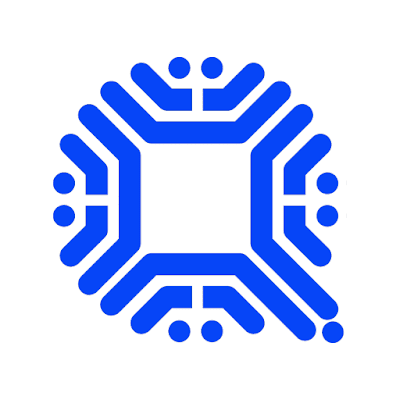Qtum (QTUM)
What is Qtum (QTUM)?
Qtum (pronounced “quantum”) is a cryptocurrency software that aims to combine different parts of the Bitcoin and Ethereum design models in a bid to entice application developers.
That’s because, despite some general similarities, Bitcoin and Ethereum diverge in the specifics of how their blockchains operate and how they record and update balances held by users.
By attempting a design that blends unique aspects of the two networks, Qtum aims to offer an alternative to Ethereum that can compete on programming, while maintaining compatibility with Bitcoin, offering something like a best-of-both-worlds blockchain solution.
The Qtum team believes this design will entice users seeking to build applications running on a blockchain, the main value proposition of Ethereum, with allowing their creations to transact in a similar way to how Bitcoin does.
However, users are likely to find Qtum also includes many other aspects of other competing cryptocurrency networks.
The Qtum’s cryptocurrency, QTUM, for example, is used to pay fees to those who help operate the network, and the distribution of newly minted QTUM is based on ownership of the asset.
QTUM coins also provide voting rights in its on-chain governance system, meaning if you buy QTUM, you can influence the direction of the software’s development.
Those seeking to stay connected on the status of the Qtum project can follow its official blog.
There, project leaders release detailed quarterly updates on the state of their development direction and general financials.
Who created Qtum?
Founded in 2016, Qtum was released by the Qtum Foundation, a non-profit organization based in Singapore that develops and maintains the software.
In 2017, the Qtum Foundation held an initial coin offering (ICO) in which it raised $15 million by selling 51% of the 100 million units of Qtum’s cryptocurrency, QTUM, in existence.
The remainder of the supply was either given to the investors and the founding team or else allocated for business development. The Qtum software went live in October 2017.
How does Qtum work?
To achieve its ambitious vision, the Qtum team modified Bitcoin’s code to allow its software users to write Ethereum-like smart contracts applications on top of it.
Put simply, its base layer copies Bitcoin’s transaction model (UTXO), while an additional layer on top operates in a way akin to Ethereum’s virtual machine (EVM), the element that executes its smart contracts and decentralized programs.
Like Ethereum, Qtum has built its own virtual machine that allows developers to write and execute programs across its distributed network of computers.
Account Abstraction Layer
The Account Abstraction Layer (AAL), Qtum’s signature technology, is the element that allows the Qtum blockchain to communicate between these two layers.
By modifying Bitcoin’s core code with a set of new commands, the AAL makes the creation, execution and handling of smart contracts that operate more like they do on Ethereum possible.
Lastly, the AAL updates the blockchain ledger after it processes smart contract transactions and adds each transaction to new blocks.
Mutualized Proof-of-Stake
To keep its network in sync, Qtum uses a variation on proof-of-stake (PoS) consensus called mutualized proof-of-stake (MPoS).
In order for nodes to validate and process transactions, they must stake QTUM in a wallet. In return for validating, processing and recording transactions, these nodes receive a reward in the form of newly minted QTUM along with the transaction fees (paid in QTUM) included in a block.
Each new block reward is divided equally between the block producing nodes and nine previous ones. This reduces the probability of an attack by masking the immediate block reward amount from potential attackers, the project claims.
Why does QTUM have value?
The QTUM cryptocurrency plays a key role in maintaining and operating the Qtum network, and can be used for holding, spending, sending or staking.
As such, QTUM’s main use case is to pay fees for executing contracts on the Qtum blockchain.
Additionally, by owning and staking QTUM, users gain the ability to vote on network upgrades, with each vote being proportional to the amount of QTUM cryptocurrency they stake.
While the initial supply of QTUM was 100 million tokens, the protocol allows for new minting of tokens to the tune of 4 QTUM per block.
Similar to Bitcoin, however, QTUM is scarce, as the number of QTUM released in each block is cut in half roughly every four years to keep the total supply finite.
Source : KRAKEN
Tags:
Cryptocurrency
